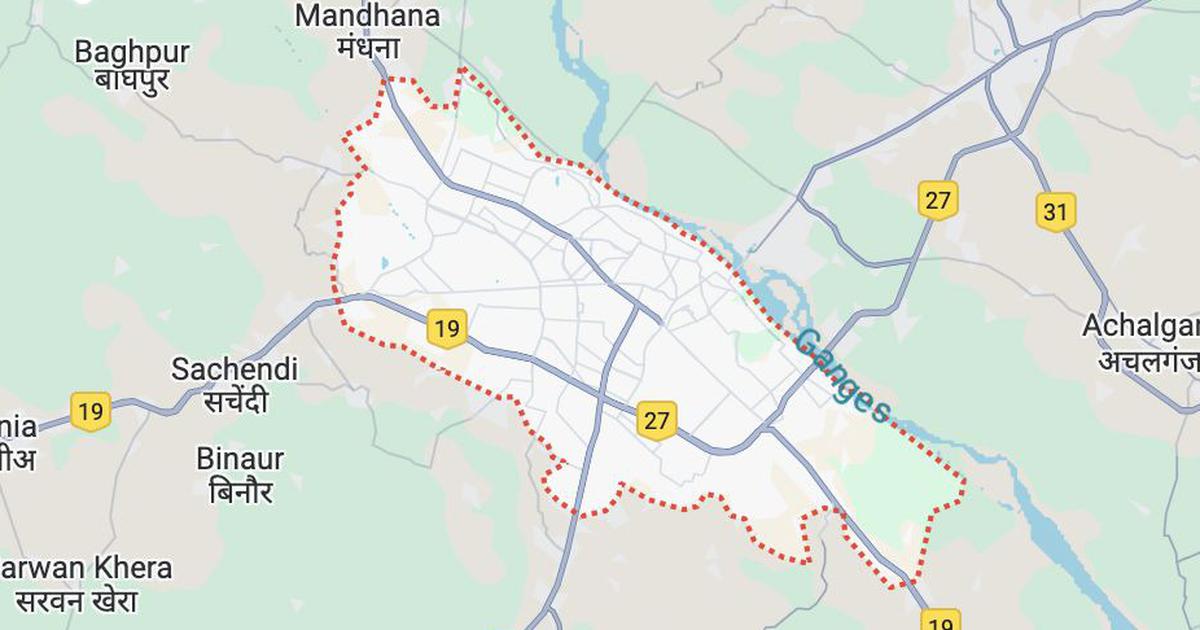The Hindu Right’s attempts to rewrite school textbooks on India and Hinduism in California meet with stiff resistance from renowned historians and scholars in the U.S. and abroad.
THE connections between communalist political strategies and textbook revisions were explored in detail in the media when the Bharatiya Janata Party (BJP) went about changing the syllabus of the National Council of Educational Research and Training (NCERT) and getting school history textbooks rewritten while in government. But few would imagine that the Rashtriya Swayamsewak Sangh (RSS)-linked organisations were in a position to put their stamp on school textbooks in California in the United States. The partial success of the “education” wings of the Hindu Swayamsewak Sangh in getting many of their revisions approved by the Curriculum Commission (CC) of the California State Board of Education has caused a virtual “international scandal”.
The State Board of Education, California, is currently engaged in approving the history/social science textbooks for grades six to eight in schools, an exercise undertaken periodically. The Hindu Education Foundation and the Vedic Foundation (based in the U.S.) have used the occasion to push through “corrections” in the textbooks approved. Shiva Bajpai, who constituted the one-member ad hoc committee set up by the Board, succeeded in getting virtually all the changes requested by these organisations incorporated into the textbooks. Professor Emeritus at California State University, Northridge, and a Hindutva-leaning adviser to the Board, Bajpai was proposed as expert by the Vedic Foundation. That the Hindutva groups have not had a walkover is thanks to the vigilance and commitment of the many academics involved in Indian studies all over the world. Intervention by Professors Michael Witzel and Steve Farmer in the form of a letter, signed by 50 other scholars, presented at a public hearing on November 9, resulted in the Board reversing its initial approval of the pro-Hindutva changes. Prof. Witzel is a well-known Indologist and has often taken up the cudgels against Hindutva ideologues such as David Frawley, N.S. Rajaram and Konrad Elst in the West.
Witzel’s letter, endorsed among others by renowned Indian historians Romila Thapar, D.N. Jha and Shereen Ratnagar, to Ruth Green, President, State Board of Education, California, on behalf of “world specialists on ancient India”, voicing “mainstream academic opinion in India, Pakistan, the United States, Europe, Australia, Taiwan and Japan” on the issue, is now part of a concerted campaign encompassing well-known scholars and hundreds of teachers and parents in California.
These scholars make the important point that the “corrections” proposed by the Hindu Right in the U.S. reflect political agendas discriminatory to millions of people in India, especially the minorities, `lower’ castes, and women; and that such revisions have already been debated thoroughly and rejected by academics and progressive political opinion in India. Besides, they “do not reflect the views of majority of the specialists on ancient Indian history, nor of majority of the Hindus”.
Asserting that “the proposed revisions are not of a scholarly, but of a religious-political nature and are primarily promoted by Hindutva supporters and non-specialist academics writing about issues far outside their areas of expertise”, the scholars have called on the Board to “reject the demands by nationalist Hindu (Hindutva) groups”. From India, 12 historians have written to the CC to reject the changes proposed by the RSS-linked organisations in the U.S.
Signatures opposing the sectarian changes have been pouring in by the day and the Board, now alert to the issue, has constituted a new Content Review Committee (among its members are Professors Witzel, James Heitzman and Stanley Wolpert), which has put together a list of recommendations that “allow for only such changes as meet the standards of objective scholarship”.
On the other side, the Hindu Education Foundation and the Vedic Foundation protested the constitution of the Content Review Committee and the inclusion of Witzel on it. They launched a campaign that the “corrections” were incorporated through a proper procedure and claimed that Witzel knew little about Hinduism and ancient Indian history. They also asserted their right to represent Hindus in the U.S. and their authority to decide what is the `authentic’ depiction of Hinduism and ancient Indian history.
Frantic mobilisation by Pranawa C. Deshmukh, a professor of physics at the Indian Institute of Technology, Chennai, in support of the changes suggested by the Vedic Foundation and the Hindu Education Foundation, and the pressure of a host of organisations that constitute the `parivar’ in the U.S. resulted in many of the proposed changes in textbooks getting the approval despite scholarly opinion being heavily weighted against it.
The details of how this was achieved remind one of the way in which RSS-sponsored revisions of textbooks were pushed through during the BJP’s tenure in power at the Centre. During the meeting for the adoption of the recommendations of the Board by the CC in the course of a public hearing on December 1 and 2, 2005, the members of the Commission actually flouted the mandate of the Education Board. Of the total 156 edits requested, the CC accepted 97 that conformed to what the Hindutva organisations had proposed.
According to Witzel, “the proceedings of the CC meetings were highly skewed, irregular and contravened the mandate given by the Board”. The Board had directed that the Commission approve only edits that “improve the factual accuracy of materials”. Instead, matters were so arranged that several Commissioners had already left in the afternoon of December 2, by the time this was voted on. Others abstained as they did not know about the matter at hand (but with stacks of related papers in front of them which they apparently had not read, including the letter by more than 100 U.S. professors of Indian background and others by groups of concerned Indian Americans). All were tired, and one Commissioner, Stan Metzenberg, Professor of Biology at California State University, Northridge, took the chance to push through aggressively the Vedic Foundation’s agenda. “The CC redefined their mandate repeatedly, contravening the mandate of the Board that the Commission should approve only edits that `improve the factual accuracy of materials’; they allowed additional changes made from the floor by Hindutvavadins to be inserted; they pushed through a sectarian agenda that redefines Indian history and Hinduism,” Witzel said.
The Hindu Education Foundation appreciatively quotes Metzenburg as saying: “I’ve read the DNA research and there was no Aryan migration. I believe the hard evidence of DNA more than I believe historians.” However, finally it had to be agreed as: “Some historians believe in the theory of an Aryan migration.” He insisted that “Hindus should at least be able to recognise their own religion when they read these textbooks”. In short, the textbooks must reflect popular common sense rather than strive to mould/challenge popular common sense on the basis of objective historical facts or the gains of scientific enquiry.
Witzel puts it thus: “California has been hijacked by a saffron agenda, worse by a sectarian saffron agenda. In this case, a strident Vaishnava one that excludes Shaiva, Devi, Tantric, Lingayat and other forms of Hindu worship and Darshana… The new CA [California] history textbooks will reflect that.”
Going by the “corrections” approved, the word “murti” means “God” (the CC agreed to the Hindu request to change “statue” to “deity”), the translation of “brahman” is “God”, and all Hindus believe in God whose name is Bhagwan.
The “corrections” demanded by the Hindutva organisations are integral to the Sangh Parivar’s political agenda in India, and similar to what the BJP government was trying to do with the NCERT syllabus and textbooks in social sciences, particularly history.
For example, among the “corrections” suggested is a clear attempt to deny the integrality of the caste system in ancient India; it was proposed to delete the reference altogether in one textbook. In another, it was proposed that the picture of an untouchable be removed. In yet another book, a reference to caste system as part of Aryan society was replaced by: “During Vedic times, people were divided into different social groups (varnas) based on their capacity to undertake a particular profession.” Another reference to caste is to read as: “A late hymn of the Rg Veda describes the interrelationship and interdependence of the four social classes.”
On women, it was suggested that the references to gender bias in ancient India were incorrect and insulting to Hindu society. Therefore the line, “Men had many more rights than women” was to be replaced by, “Men had different duties (dharma) and rights than women. Many women were among the sages to whom the Vedas were revealed.”
In another textbook, the changes included a specific addition that “the recent archaeological proofs are negating the Aryan invasion theory. The new theory suggests that Aryans were not the outsiders”. Elsewhere: “They [Aryans] were part of a larger group of people historians refer to as the Indo-Europeans” is replaced with the statement: “Some historians believe the Aryans were part of a larger group of people known as the Indo-Europeans.” “The Vedas came to form the major beliefs of the religion called Brahmanism” is replaced with: “The Vedas constitute the source of Hinduism.” Early Aryan religion is to be replaced with references to early Hindu religion.
Still other corrections follow the familiar pattern of ante-dating the Rg Veda, confusing dates of Indus and Harappa city-based civilisations with the Vedic civilisation, conflating Brahmanical practices with Hinduism, describing the Vedas as the source and basic texts of Hinduism, denying the plurality of gods worshipped through history in favour of one God in different forms, depicting sudras as “serving all classes” and doing “labour-intensive work” rather than serving `upper’ castes and so on. The current Hindutva preoccupations such as asserting the sacredness of cows, vegetarianism and the Saraswati civilisation myth have also found their way into the textbooks.
Tolerance is shown as “usual” for the time of Asoka in ancient India; the references to technology, science and mathematics in ancient India have been modified to enable suitable glorification; and negative aspects of society are either deleted or presented as cultural specificities rather than as oppressive ones.
THE moves by the Hindu Right in the U.S. are no flash in the pan. The web sites of two of the organisations spearheading the Hindutva campaign – the Hindu Education Foundation and the Vedic Foundation – expressly state the revision of school textbooks in the U.S. as part of their political agenda. They regularly “interact” with State Education Committees that define school curriculum, conduct seminars and training programmes for teachers and “create resources” for parents who “wish to provide such opportunities for educators in their own areas”. There are fora of all kinds offering entertainment, educational services and social support to youth. Alternative social networks through bhajan mandalis, yoga centres, discussion groups, special programmes and publications devoted to children, answer the yearnings for roots and culture among immigrants. The RSS-linked organisations have penetrated all these and are creating new ones all the time. The entire effort is part of the RSS’ larger goal to “educate” Hindu children brought up in the U.S. to be “good Hindus” and to “learn the truth about Indian history and culture”, and ultimately to finance their “social work” in India.
Not long ago, citizens’ groups in India and North America exposed the nexus between funding of charities in the West and the hate campaigns and the expansion of communal networks of the Sangh Parivar in India. Infusing hatred directly or through the educational set-up is not as easy in the U.S. as it is through the Vidya Bharati schools and the Ekal Vidyalayas in India. The strategy of the Hindu Right is different in the U.S. It does the next best thing: it creates innumerable social networks where prejudices are nurtured and fascist solutions to problems legitimised, and glories of ancient India and Hinduism rule the roost.
This story first appeared on frontline.thehindu.com






